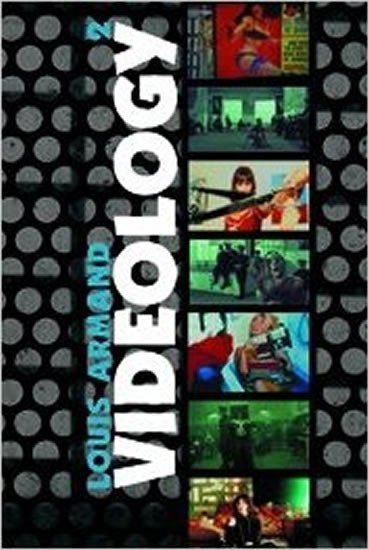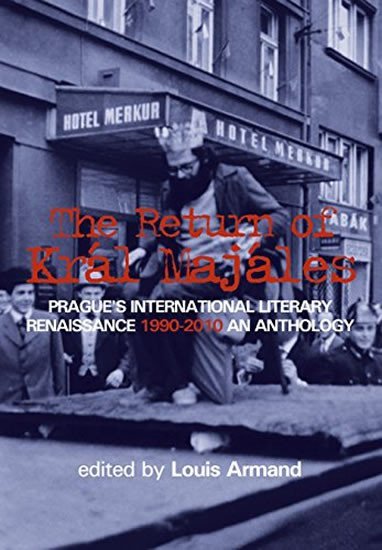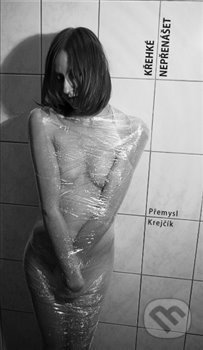Videology 2
Knihu koupíte v
2 e-shopech
od
229 Kč
Pokud se vám po kliknutí na tlačítko "Do obchodu" nezobrazí stránka knihy ve vybraném e-shopu, je třeba vypnout AdBlock ve vašem prohlížeči pro naši stránku.
Návod na vypnutí je například na adrese https://o.seznam.cz/jak-vypnout-adblock/#1.
Krátký popis
Publikace: Videology 2 - Armand Louis. VIDEOLOGY 2 continues Louis
Armand’s broad-ranging critique of realism in film, visual arts and
literature. From Nam June Paik’s experimental TV to the militant
cinema of Pontecorvo, Fassbinder & Godard; from Karel Teige’s
cine-poetics to Neo-Attack; from anti-American filmographies of
Petit, Jarmusch & Wenders, to the “cinema at the end of the world.”
Includes essays on Robert Fuest, Gene Youngblood, Vilem Flusser,
Charlotte Moorman, Yves Klein, Alain Robbe-Grillet, Amos Poe, Andy
Warhol, John Cassavetes, Russ Meyer, Brian De Palma, Jerry
Schatzberg, Ken Russell, Nicolas Roeg, Liliana Cavani, Alex Cox,
Alejandro Jodorowsky, Emir Kusturica, György Pálfi… Videology 2 is
the second volume of a 3-part critique of the ideology of realism
across the culture industry, from literature to film, cybernetics
and the plastic arts. Its broadly “syncretic” approach follows the
models of Marshall McLuhan, Buckminster Fuller, Karel Teige, and
others, and is in keeping with the “interdiscisplinarity” of the
historical avant-gardes and the project of modernity itself. The
term “videology” therefore covers a nexus of aesthetic/ideological
forms – from Jeremy Bentham’s “Panopticon” and the widespread
emergence of image technologies during the industrial revolution
(photography, cinema), to “Big Bother,” “virtual reality,” and the
discourse of post-humanism. Consequently, this study is broadly
focused upon discourses of modernity/postmodernity and their
contemporary ramifications in the work of experimental
(anti-realist/avant-garde) writers, artists, architects,
filmmakers, philosophers and theorists – including, for example,
Stelarc’s robo-prosthetic performance art, Karel Teige’s
ciné-poetics, Robert Smithson’s “future monuments,” Isidore Isou’s
hypergraphy, the video art of Nam June Paik, the films of Jean-Luc
Godard, & more. In this context, “realism” is considered an
instrument of cultural normalisation, co-evolving with the advent
of mass literacy, global communications systems and simulacral
technologies – designed to synthesise (by way of genre and
“identity politics”) and (as an extension of humanism) to
sentimentalise the broader abstractive processes of industrial
modernity into an operative cultural framework: a framework, in
other words, of commodification. Publikace: Videology 2 - Armand
Louis.
Vývoj ceny
Aktuální Ø cena knihy Videology 2 je 248 Kč
Výběr knih autora
Louis Armand
Zobrazit všechny knihy autora
Louis Armand
Výběr knih vydavatele
Spolek pro Prahu literární
Zobrazit všechny knihy vydavatele
Spolek pro Prahu literární
Naše tipy
- Právě probíhající akce a slevy na knihy
-
Knihydobrovsky.cz | do 12.12.2025
-
Knihydobrovsky.cz | do 17.12.2025
-
Knihydobrovsky.cz | do 24.12.2025
-
Knihydobrovsky.cz | do 24.12.2025
-
Bookshop.cz | do 31.12.2025
- zobrazit všechny akce















